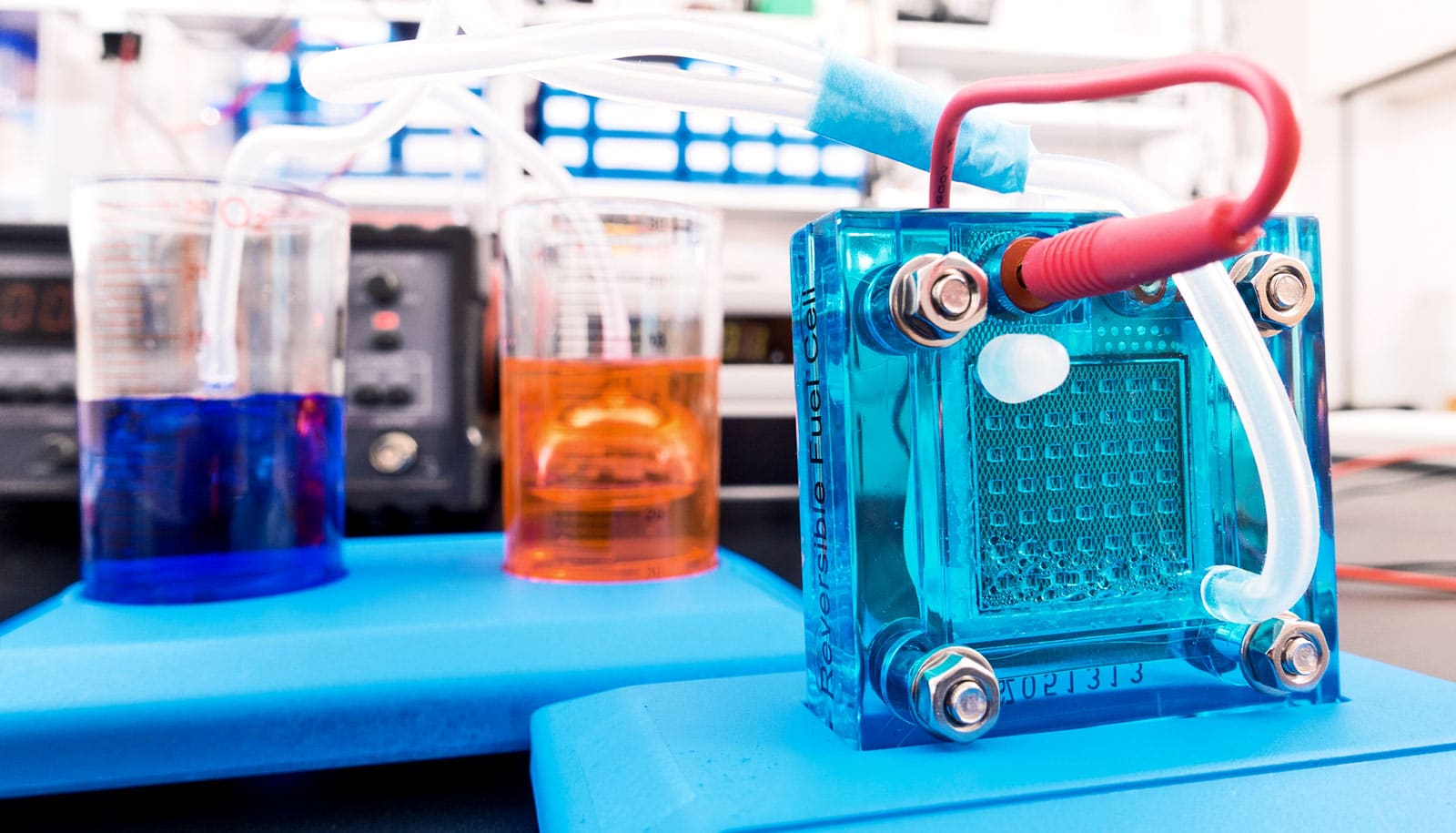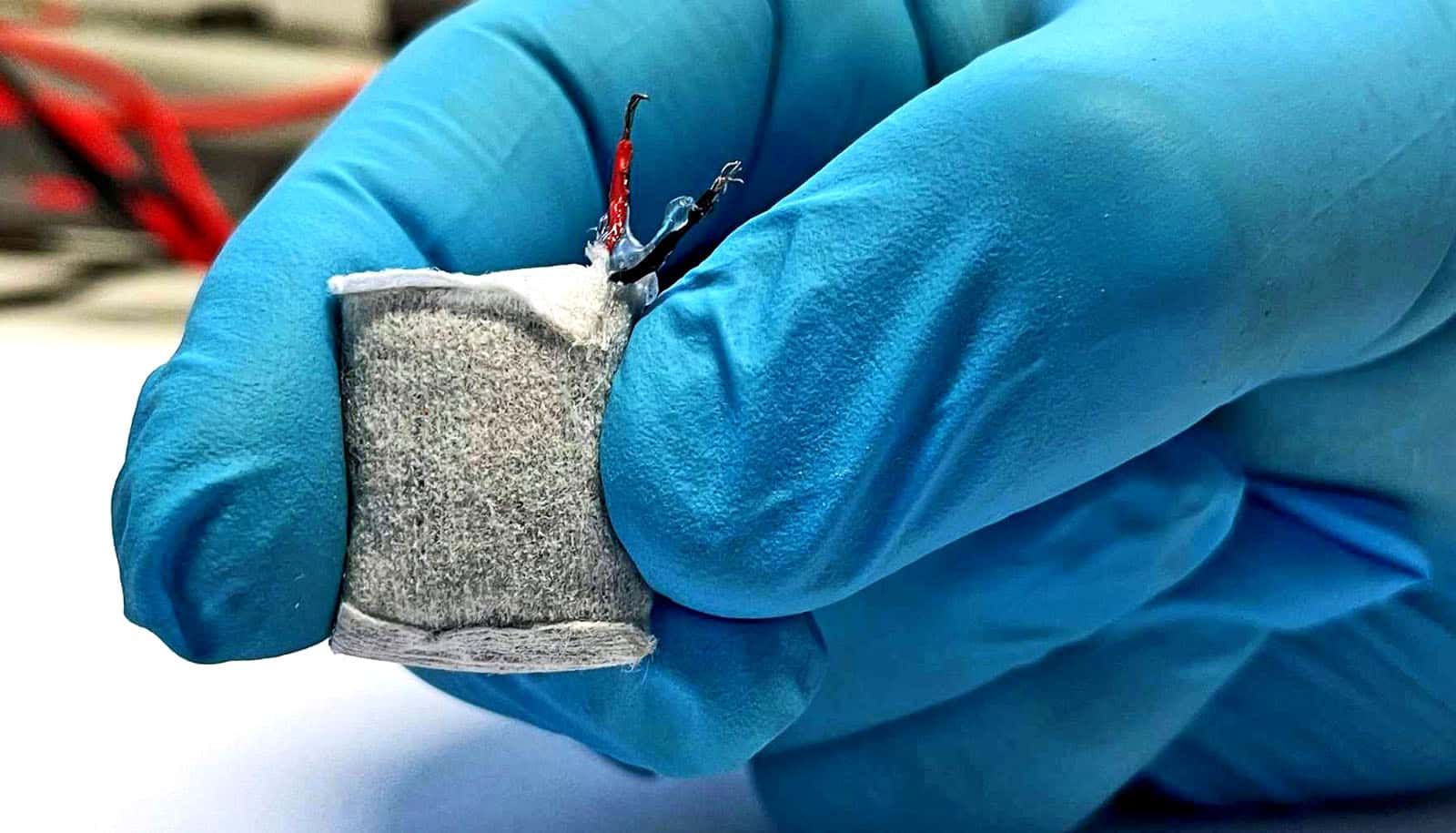Researchers have created a way to look inside fuel cells to see the chemical processes that lead them to breakdown.
“If you buy a device—a car, a cell phone—you want it to last as long as possible…”
Fuel cells could someday generate electricity for nearly any device that’s battery-powered, including automobiles, laptops, and cellphones. Typically using hydrogen as fuel and air as an oxidant, fuel cells are cleaner than internal combustion engines because they produce power via electrochemical reactions. Since water is their primary product, they considerably reduce pollution.
The oxidation, or breakdown, of a fuel cell’s central electrolyte membrane can shorten their lifespan. The process leads to formation of holes in the membrane and can ultimately cause a chemical short circuit. Engineers created the new technique to examine the rate at which this oxidation occurs with hopes of finding out how to make fuel cells last longer.
Using fluorescence spectroscopy inside the fuel cell, they are able to probe the formation of the chemicals responsible for the oxidation, namely free radicals, during operation. The technique could be a game changer when it comes to understanding how the cells break down, and designing mitigation strategies that would extend the fuel cell’s lifetime.
“If you buy a device—a car, a cell phone—you want it to last as long as possible,” says Vijay Ramani, professor of environment & energy at the School of Engineering & Applied Science at Washington University in St. Louis.
“Unfortunately, components in a fuel cell can degrade, and it’s not an easy fix. What our new research does is really shed light on one of the modes by which these devices can fail, allowing us to figure out methods so we can improve the lifetime of devices that use these fuel cells,” he explains.
The research utilizes an in situ approach to examine the fuel cell’s inner membranes. A fluorescent dye is incorporated and used as a marker to ascertain the rate at which damaging free radicals are generated during operation.
For cheaper fuel cells, spread these atoms over graphene
“By using fluorescence spectroscopy in conjunction with an optical fiber, we can quantify the oxidative free radicals generated inside the fuel cell, which work to break down the membranes,” says Yunzhu Zhang, a doctoral candidate in Ramani’s lab and study coauthor.
Once they were able to observe the fuel cell’s inner workings, the researchers noticed that the weaker the light emitted from the fuel cell membrane, the greater the breakdown occurring from within.
“We can see this process occurring in real time,” says Shrihari Sankarasubramanian, a postdoctoral researcher who assisted with the project.
Until now, researchers examining fuel cell breakdown relied on the cell’s emissions to determine which chemical reactions might have been to blame for membrane breakdowns. They say this new approach allows them to focus on the factors taking place inside for a better assessment.
“Since the free radicals that cause the fuel cell membrane degradation are so short-lived, and the anion exchange membranes are so thin, our novel in situ approach is key to better study, understand and prevent the chemical breakdowns that is occurring during fuel cell operation,” says coauthor Javier Parrondo, a postdoctoral researcher.
Which electric car is greener: Battery or fuel cell?
“The next step is to introduce antioxidant chemicals inside the fuel cell membranes, to see if they can reduce the rate at which these membranes break down,” Ramani says.
The research appears in the journal ChemSusChem.
Funding for this research came from the Office of Naval Research.



